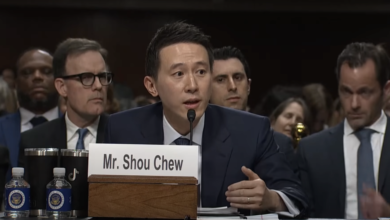“You can’t just convince them through projects and goodwill,” another Marine officer said. “You have to show up at their door with two companies of Marines and start killing people. That’s how you start convincing them.”
This was the comment made by a Marine officer to the Washington Post for its April 16 story about “signs of progress” for President Obama’s surge strategy in southern Afghanistan.
The officer was discussing how the U.S. strategy succeeded in the signing of a security pact between elders of the Alikozai area in southern Afghanistan and the U.S.-backed Karzai government.
Many hundreds of young men from the Alikozai area were killed in an onslaught by U.S./NATO troops in months leading up the agreement, according to the Washington Post account.
“We started stacking bodies like cordwood,” said an officer in Sangin, who like other Marines asked for anonymity to speak frankly. “And they came to a point where they said, ‘Holy [expletive], there aren’t that many of us left.’ ”
The Washington Post is an enthusiastic supporter of the expanding war in Afghanistan. The newspaper editorial policy insists that the war is necessary for an improvement in the lives of average Afghans.
Like other U.S. corporate-owned media outlets, the Post pretends that the U.S. counter-insurgency strategy is aimed at winning the hearts and minds of impoverished Afghan villagers. Its own reports about war strategy, however, reveal that the Pentagon cares as much about Afghan villages as it did about those in Vietnam that were razed and burned by U.S. troops to “save them” from falling under the control of Vietnamese communists.
In this recent story, the Post approvingly explains why it was necessary for a battalion of the Army’s 101st Airborne Division to completely destroy the village of Tarok Kolache after seven U.S. soldiers were killed and 70 others wounded in the first 100 days of an operation in the Arghandab district of Kandahar province last July:
… [I]nstead of sipping tea, [Lt. Col. David]Flynn decided to strike back.
An initial target was the village of Tarok Kolache, a collection of about a dozen mud-brick, multi-family housing compounds surrounded by pomegranate orchards. Video from surveillance aircraft indicated that the village had been vacated, save for insurgents who were manufacturing homemade explosives in the walled-off courtyards.
The Post carries before and after pictures of the entirely flattened village. “U.S. B-1B Lancer and A-10 Warthog jets conducted repeated bombing runs. A new ground-launched artillery rocket system also pelted the enclave. All told, almost 25 tons of ordnance was dropped on Tarok Kolache,” the Post states.
The U.S. war in Afghanistan is a terrorist enterprise. By employing these tactics of terror, the Pentagon seeks to force Afghan peasants to end their resistance to foreign occupation. They are succeeding in creating oceans of suffering among people, most of who have never heard of the World Trade Center or the September 11 attacks. In fact, a 2010 survey conducted by the International Council on Security and Development (ICOS) showed that 92 percent of 1,000 Afghan men surveyed in Helmand and Kandahar provinces knew nothing of the hijacked airliner attacks in 2001.
The real goal of the operation is not to “protect the American people.” Rather, it is to create a network of permanent military bases in an energy-rich and geostrategically important region that the U.S. Empire has targeted for enduring domination. The U.S. effort can kill thousands of Afghans and destroy their villages but it will not succeed in liquidating the resistance of the people. From Vietnam to Afghanistan—the Pentagon Brass have learned nothing.
| Brian Becker will be speaking about Afghanistan and other topics in Los Angeles on Friday, April 22 at 7:30pm, 137 N. Virgil Ave, # 203. |





